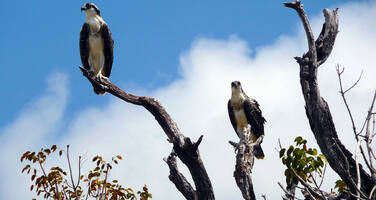Everglades National Park
Factors affecting the property in 1998*
- Crop production
- Housing
- Industrial areas
- Storms
- Surface water pollution
- Water infrastructure
Factors* affecting the property identified in previous reports
- Agricultural, industrial and urban developments altering the natural systems;
- Pollution of the water (nutrients and mercury);
- Hurricane in August 1992
International Assistance: requests for the property until 1998
Total amount approved : 0 USD
Missions to the property until 1998**
Conservation issues presented to the World Heritage Committee in 1998
At its last session (Naples, 1997), the Committee noted significant progress made in the state of conservation of this site following generous Federal and State allocations of financial and human resources. However, the Committee noted that the State Party was of the view that the site is still under threat and hence decided to retain the site in the List of World Heritage in Danger. The State Party has informed the Centre that it will provide an update on the state of conservation of Everglades in time for the twenty-second session of the Committee.
Summary of the interventions
Decisions adopted by the Committee in 1998
22 BUR V.A.1
State of conservation
The Bureau reviewed state of conservation reports on thirteen of the fifteen natural World Heritage sites inscribed on the List of World Heritage in Danger. The Bureau was informed that no new information was received with regard to the two natural World Heritage sites of the United States of America, namely the Everglades and Yellowstone National Parks, and that up-to-date information on the state of conservation of those two sites, based on reports requested from the State Party by 15 September 1998, and expected to be received by then, will be submitted to the twenty-second session of the Committee to be convened in Kyoto, Japan, during 30 November – 5 December, 1998.
22 COM VII.12/4
SOC: Everglades National Park (United States of America)
VII.12 Everglades National Park (United States of America)
At its last session (Naples, 1997), the Committee noted significant progress made in the state of conservation of this site following generous Federal and State allocations of financial and human resources. The Delegate of the United States of America provided a detailed state of conservation report on this site, which outlined important measures undertaken to ensure continuing progress in the restoration of this site. In particular, the Committee noted the following:
(i) US$ 26 million worth of land purchases have been completed in the East Everglades Expansion Area; an additional US$ 40 million are needed to finalize the total of 109,000 acres of additional land purchases foreseen as part of the programme to expand the total extent of the Everglades National Park;
(ii) The western population of the cape sable seaside sparrow has suffered from abnormally prolonged wet periods which had been created by water management structures that artificially keep waters in the western Shark Slough in order to keep the eastern parts dry. Flooding denies the sparrow access to its nesting sites, found only in the transitional grasslands of the western Shark Slough. Restoration of water flows to the eastern Shark Slough is a high priority measure for the restoration of the overall Everglades ecosystem and will serve the interests of the sparrow as well. Everglades National Park and the Fish and Wildlife Services are planning water diversions to the Eastern Shark Slough. Fortunate dry weather conditions coincided with the nesting season of the sparrow in April 1998 and enabled breeding success comparable to the previous year;
(iii) Legislation has been introduced in the US Congress that would permanently retain the presence of the Miccosukee Tribe within the Everglades National Park. Any agreement for providing a site for the Tribe's continued practice of its living culture may come into conflict with the restoration of water flows through the eastern Shark Slough (where the Miccosukee Tribe is located), considered to be a essential measure for the restoration of the overall Everglades ecosystem.
The Delegate of the United States informed the Committee that despite significant progress in acquiring land, and allocating financial and human resources necessary for the restoration of the Everglades, the US Government believes that the site continues to be in Danger. In response to a question raised by IUCN as to how the State Party would determine when the site could be removed from the List of World Heritage in Danger, the United States Delegate pointed that success measures to determine effects of the restoration activities are being developed and will be reported to the Committee in due course.
The Committee agreed to the request of the State Party and decided to retain this site in the List of World Heritage in Danger.
The Committee may review new information expected to be available at the time of its twenty-second session and decide whether or not this site should be retained in the List of World Heritage in Danger.

Exports
* :
The threats indicated are listed in alphabetical order; their order does not constitute a classification according to the importance of their impact on the property.
Furthermore, they are presented irrespective of the type of threat faced by the property, i.e. with specific and proven imminent danger (“ascertained danger”) or with threats which could have deleterious effects on the property’s Outstanding Universal Value (“potential danger”).
** : All mission reports are not always available electronically.

